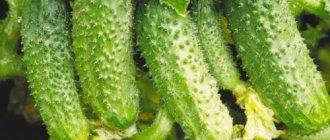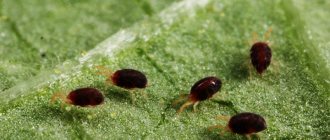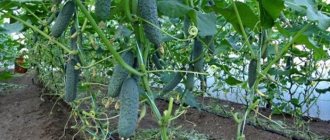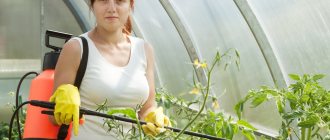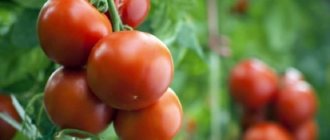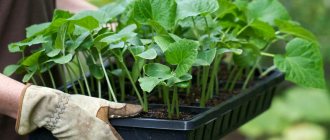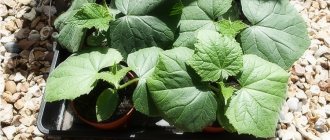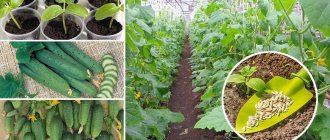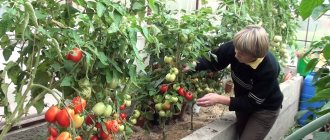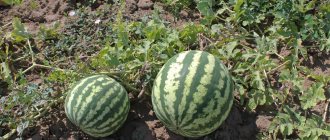Do you think it is possible to grow early cucumbers in a greenhouse without additional heating? So that in May you can eat your own cucumbers, and at the same time zucchini? Perhaps many will answer that this is very doubtful, especially in our region. I also used to think that it was necessary to plant cucumber seedlings in an unheated greenhouse no earlier than mid-May, because pumpkin plants do not tolerate low temperatures and greatly slow down their development already at +15⁰C.
But last year my opinion on this matter changed! My baby daughter was growing up, it was necessary to introduce complementary foods to her, and zucchini (the best food for the first complementary foods) from the supermarket, although they looked appetizing, did not inspire confidence. Who knows what chemical they were filled with? We also really wanted fresh, crispy cucumbers, especially for our eldest daughter, who accompanied every trip to the store with a song: “Mom, why do they sell cucumbers in the store, but they don’t grow in yours yet?” Really, why?
And I decided on another garden experiment, the goal of which was to get early cucumbers and zucchini in an unheated greenhouse by May. I’ll say right away that my experiment was a success: we triumphantly ate the first cucumber on May 9, and a week later the first zucchini arrived! And although I planted only 5 cucumber plants and 6 zucchini plants this way (exactly in one 5-meter narrow bed), this was quite enough to feed my family, treat my neighbors, and even sell something!
Moreover, in the fall, when the zucchini in the open ground had already withered away, the greenhouse experimental bed continued to bear fruit! And if I had covered it during the first frost, I could have enjoyed the harvest for a long time! But, to be honest, I no longer had the desire or strength to tinker with it! Everything has its time!
This year I definitely want to consolidate my positive experience; I have already sowed cucumbers and zucchini seedlings! And you, dear readers, I invite you to join me, especially since it’s not too late to do so!
In the meantime, I’ll describe in detail how I grew early cucumbers and zucchini in an unheated greenhouse last year.
Early cultivation of cucumbers: your own cucumbers already in May, a few secrets of early cucumbers
Typically, cucumbers are sown from mid-April to mid-May. Harvesting in this case is possible from mid-July to the end of summer. Cucumbers cannot tolerate frost. That's why we don't sow them too early. However, there is a way to grow early cucumbers and taste the juicy beauties from your garden at the beginning of summer or even in May. It is only necessary to take into account some of the features of this plant. We will reveal 7 secrets of early cucumbers to you in this article.
Early cultivation of cucumbers.
Preparing the greenhouse for receiving seedlings and sowing plants
It is important to thoroughly prepare the greenhouse before sowing seedlings. Since the timing is not entirely suitable, the soil needs to be warmed up. This is done using special chemicals or humus. Since it is not always possible to find drugs, it is worth paying attention to the second method. Early cucumbers must be grown in warm soil. To create this condition, manure or compost is used. It is better to use fresh or semi-rotted manure (from cows or horses).
Important! If possible, you can use bird droppings. It will be needed 2-3 times less, depending on the size of the greenhouse.
To successfully grow an early crop, you need to prepare the soil.
A trench (15-25 centimeters) is dug in the garden bed. Manure is placed in it and then covered with earth. The ground is thoroughly watered. During the decomposition process, manure releases enormous amounts of heat into the soil. It will be enough for growing cucumbers. Plus it will be an additional fertilizer for plants. Then everything is done in the usual manner: places for sowing plants are prepared, and a method of garter is invented.
Early cultivation of cucumbers: where to sow cucumbers for an early harvest
To get an early harvest of green, vigorous plants, you will have to abandon the traditional sowing of seeds in open ground. Cucumbers love warmth, so spring frosts and temperature changes are destructive for them. In addition, in soil that is damp after the snow melts, the seeds can rot even before they germinate, and hungry mice will readily feast on them.
Therefore, it is best to germinate seeds for seedlings indoors at room temperature, then the first sprouts will appear within 1-2 weeks.
Note! The time for planting cucumber seeds for seedlings should be calculated taking into account the climatic conditions of your area.
The seedlings will be ready for planting in the ground 4-5 weeks after sowing the seeds. Leaving it in pots for a longer time will lead to thinning and weakening of the sprouts, which can reduce the future harvest of early cucumbers.
Soil preparation
The first stage when planting cucumbers is preparing the soil. Vegetables love soft, loose soil, which must also be fertile.
When growing cucumber seedlings, you can purchase a ready-made substrate in the store. The soil should not only be loose and fertile, but also retain moisture, since cucumbers love to “drink.”
There should be a minimum of peat, since soil with a high content of peat dries out very quickly in greenhouse conditions.
The optimal composition of the soil substrate for cucumber seedlings is as follows:
- 3 parts of turf land;
- 2 parts humus;
- 1 part sand.
This mixture should not contain lumps. Before planting, it is recommended to bake it in the oven for 10-20 minutes or freeze it (prepare it in the fall and take it out to the balcony for the winter). Such procedures help destroy pathogenic microbes. Before sowing seeds, it is recommended to add 1 liter of vermiculite (for loosening), a glass of ash, and two tablespoons of superphosphate to 10 liters of mixture.
Early cultivation of cucumbers: how to sow cucumbers for seedlings
It is best to plant one seed at a time in a small pot so that you do not have to thin out if several seeds germinate nearby. For such planting at the initial stage, an empty cellular egg carton is suitable.
Cucumber seedlings can get quite large before you decide to move them outside. Therefore, when the seeds germinate, carefully, together with a lump of earth, transplant them into pots with a diameter of 9 cm. They will be sufficient in size so that the seedlings can form additional roots and gain strength before transplanting them into open ground.
Seedlings at home: (read more)
To sow seeds, use well-drained soil with the addition of coarse sand to maintain water balance. Coconut substrate with neutral acidity is also good for growing cucumber seedlings.
The seeds are planted to a depth of half a centimeter, covering them with coarse sand or a 1:1 mixture of sand and soil.
Pots with seeds are placed in a warm room on the sunny side. The soil should be moderately moist. Under favorable conditions, seeds germinate in 7-10 days.
If you have a propagator, this will greatly facilitate the cultivation of seedlings for early cucumbers. Modern propagators maintain the specified optimal parameters of temperature, light and humidity throughout the entire period of seed development. In such a device, seedlings emerge much faster and seedlings germinate more viable. To germinate seeds, set the temperature to +21°…+23°C.
There is one “secret” technique for germinating cucumber seeds for an early harvest: before planting, pour very hot water over them, tightly close the container with the seeds with a lid and wrap it so that the heat is retained as long as possible. Or pour boiling water over the soil intended for germination, quickly plant the seeds there, cover and also try to keep warm. This technique disinfects the seeds and promotes faster germination.
It is best to plant cucumbers one seed at a time in a small pot or cassette so that you do not have to thin out.
Biological features of cucumbers
Before starting to grow cucumbers, beginners need to study the conditions of maintenance and care, because successful growth and timely harvest directly depend on its biological nature. Planting and care requirements take into account its tropical origin, which has not been lost even through centuries of selection. Control of temperature and air humidity is the basic rule of maintenance.
Temperature. Warmth is especially important during germination. Seeds hatch at a soil temperature of +25 degrees (hardened ones can withstand +18, seedlings appear on the 10th day). In soil heated to +20, the seed germinates in 4–5 days.
When sowing early, it is necessary to take into account the air temperature inside the greenhouse. Healthy seedlings tolerate cold weather more easily than seedlings, but still the development of green mass stops if the temperature drops below +15, there is a danger of rotting roots and stems, and falling flowers.
The timing of flowering and fruiting directly depends on temperatures. For example, early ripening varieties growing at optimal +22 - 25 begin to bloom (depending on the variety) on 25 - 28 days after germination, green plants appear on 35 - 38. A decrease in temperatures during the day to +17, and at night +12 extends the period to 10 - 15 days. Despite the existence of frost-resistant varieties, they all remain productive at optimal temperatures.
Important! Cucumber (at any stage of development) does not tolerate frost. Sharp temperature fluctuations within 3-4 days lead to the inevitable death of the plant.
Humidity. The increased requirements of cucumber for air humidity are determined by the presence of large leaves that evaporate huge amounts of moisture, creating comfortable conditions for themselves. The superficial root system has a reduced suction force from the deep layers of the soil, so the soil should always be moist 70 - 80%, the optimal air humidity is 80 - 90%.
A decrease in humidity is manifested by stunted growth, falling flowers, and wilting of leaves. More water is absorbed by the plant during the fruiting period. Soil moistening becomes more frequent, increasing the amount of water.
Important! Watering should be regular, moderate (without flooding the soil after drying out), only with warm water. Cold watering causes stress and the suction roots rot.
Lighting. Cucumber is less demanding of light, but bright 12-hour daylight, followed by the darkness of night, promotes the growing season, especially of seedlings. Reducing the intensity of UV rays promotes the growth of leaves - this further shades the plant, the formation of flowers slows down, their number decreases, and the few fruits formed are poor in sugars and useful minerals.
The location of the greenhouse is of great importance for the illumination of greenhouse plantings (without additional equipment). It is placed on a sunny area on the south side, positioned from east to west. This position of the structure contributes to uniform illumination of the plantings throughout the day.
Important! For better illumination of cucumber plants in a greenhouse, it is necessary to follow the rules for planting sprouts recommended for each variety; prevent thickening of the tops by promptly removing excess leaves and shoots.
Secrets of early cucumbers: planting young cucumber seedlings
About a month after planting the seeds, when a second, now real, pair of leaves appears above the first two leaves, the seedlings are ready to be transplanted into the ground.
This happens somewhere in early May. Before transplanting seedlings into the ground, you can do the so-called hardening of seedlings by placing them outside or in a greenhouse for several hours on a sunny day.
Since the weather during this period is still not stable enough, cucumber seedlings are planted in a greenhouse or greenhouse. There, the air and soil maintain a higher temperature, and young plants will be protected from adverse environmental influences. In this case, you can plant the sprouts earlier and get the first fruits within 2-3 weeks after planting.
The timing of planting in a greenhouse depends on the possibility of heating it, the covering material, and the possibility of additional insulation in case of unexpected cold weather.
If your climatic conditions allow, then you can plant seedlings directly in open ground. But before this it is necessary to warm the soil well. The temperature at night should not be lower than +5°C. At night, to avoid freezing, the plants can be covered with an inverted bucket (preferably a plastic one) or a plastic bottle cut off from the bottom.
When planting in open ground, the choice of seed varieties is somewhat limited, and the likelihood of plant disease is higher.
If there is no heated greenhouse, and the outdoors is not yet warm enough, a greenhouse will help take care of the young sprouts of early cucumbers. One of its options is shown in the figure below.
When the ground is cleared of snow, a bed about 1 m wide is dug up. A 40x40 cm depression is made in the center along the length of the bed, manure and straw are poured into the bottom 20 cm thick, filled with hot water and covered with a 20 cm layer of soil.
We plant cucumber bushes at a distance of 40 cm from each other on both sides of the nutrient ditch; we make arcs of thick wire or branches to support the film. The greenhouse must be covered with a transparent film, carefully securing it around the edges.
When constructing greenhouses you should keep in mind:
- The greenhouse should be well lit, but not overheated.
- On sunny days, the film should be removed to ventilate, harden the young plants, and so that the leaves do not get burned through the film and from overheating the air.
- Humus releases not only heat, but also additional moisture.
Ventilating the greenhouse will help prevent moisture from settling on the plants and causing them to rot.
Scheme of arranging a greenhouse for early cucumbers.
Choosing a greenhouse and its location
It is important to choose the right greenhouse and find a suitable place for it on your personal plot.
The greenhouse must be spacious so that the cucumber harvest is enough for the whole family. The height of the central part of the structure is at least two meters, since cucumber vines grow up to 3-3.5 meters during the season. A greenhouse higher than 2 meters is not practical - the air in it will warm up more slowly. A ventilation window is a mandatory attribute of a greenhouse.
The structure for cucumbers is installed on level ground. It is better to place it from north to south. In this direction, the plants will be well lit throughout the day.
Secrets of early cucumbers: how to prepare the soil for planting cucumber seedlings
- Do not bring snow into the greenhouse intended for growing cucumbers in winter. This will increase soil moisture and greatly delay its warming up in the spring.
- To speed up the warming up of soil that has compacted over the winter, dig it up at the beginning of spring without loosening it. The earth in clods will warm up faster.
- Two weeks before the intended planting, you should feed the garden plot with any garden fertilizer for growing vegetables in open ground.
- About a week before planting cucumber seedlings, you need to crush the soil and water it daily with hot water, each time then covering it with a dark film.
- When planting seedlings, especially if it is open ground, do not remove the film from the bed. Plants are planted in cross-shaped cuts made at a certain distance on the film.
Before planting, make sure there are no more frosts and the soil has warmed to a temperature of about +15°C. Soil temperature is measured with a conventional thermometer at a depth of 8 cm.
The ideal acidity for cucumbers is soil with a pH of 5.5 to 6.8.
Note! The area for growing cucumbers should be sunny, fertile, with good permeable soil. The enemies of cucumbers are frost, precipitation and high humidity.
Seedling care
- Exposure to light should be 12 hours (in areas with short daylight hours, backlighting is necessary).
- Daytime temperature is at least + 22, night + 16.
- Watering is regular, moderate, only with warm (2 degrees above room temperature), soft water.
- Feeding required: 1 after the appearance of sprouts after 14 days (urea solution 1 tsp per 3 l); 2 after 7 days (nitrophoska solution 1 tsp with ash 1 tbsp per 3 l).
- Before planting in a greenhouse, seedlings must be hardened off, gradually lowering the temperature either by ventilating, opening a window (not forgetting about drafts), or by moving them to a cooler room.
- Strengthened, hardened seedlings are planted on beds at the age of 25 - 35 days.
Early cultivation of cucumbers: warm beds for an early harvest
A warm bed is a great way to get early cucumbers in May, especially if the spring has been cool. In addition, such a bed also provides additional feeding.
Two types of warm beds are used: buried and raised. Such beds resemble a multi-layer sandwich, where the ingredients are organic fertilizers. It's good to make raised beds. In such beds, excess water can drain away during rains.
The advantage of a layered bed is the following: when organic matter decomposes, a double effect is obtained - warmth and nutrition.
It is preferable to make such a bed in the fall so that its components rot over the winter, then the bed will be ready for planting seedlings in the spring.
Here are a few rules for making a warm bed:
- you need to choose a spacious, sunny place;
- before filling the next layer, fill the bottom one with water so that the layers are wet all the time;
- to fill the bed, take parts of only healthy plants, without fungal infections or damage by insect pests; the width of the bed is chosen arbitrarily, but not more than 1 meter, and the depth is the size of two shovels with a small margin, which is about 50 cm;
- the bottom layer of the bed filling consists of large coarse waste, which takes more time to rot; these can be thin branches of deciduous trees, thick stems, small wood waste;
- the next layer consists of coarse herbaceous plants, vegetable peelings (pre-boil potato peelings to avoid sprouting), soft stems;
- leaves and freshly cut grass without seeds are laid on top in a thick layer; the grass layer must be well compacted to avoid the formation of unevenness; add complex fertilizer: nitroammofoska – 1 tbsp. a spoon per square meter - and a glass of wood ash, you can fill it with a solution of manure with or without straw;
- cover this filling with fertile soil 15 - 20 cm thick;
- cover the finished bed with dark film.
You can make a warm bed in the spring, but in this case the bed is filled only with soft green mass, which is quickly processed in the ground, and plant food waste. It is especially good to use nettles without roots, clover, dandelion, and onion peels. Mix with compost or vermicompost. Pour boiling water over, cover with dark film. Seedlings are planted after a few days.
Growing cucumbers in warm beds significantly speeds up their fruiting.
Diseases and pests
The warm, humid climate of the greenhouse, which cucumbers love, is favorable for the proliferation of various diseases.
For preventive purposes in the spring, the greenhouse should be washed with a detergent, which is suitable as laundry soap. Good disinfection can be carried out using a sulfur bomb. It will destroy mold and mildew. It can only be used in a greenhouse behind closed doors and windows to prevent acrid smoke from penetrating outside. Large gaps in the structure must also be closed.
If you intend to change the soil in the greenhouse, it should not be taken from the areas where pumpkin crops grew. In this case, diseases can be introduced along with the soil substrate. The ground should be watered with a non-concentrated solution of copper sulfate.
Cucumbers are an undemanding vegetable crop. When growing them in greenhouse conditions, you need to follow simple care rules, and then a bountiful, high-quality harvest will please the whole family. In addition, growing cucumbers in a greenhouse is not only useful, but also an interesting activity.
Secrets of early cucumbers: choosing seeds
When choosing cucumber seeds, give preference to those varieties that are suitable for your climate zone. Currently, many early ripening hybrids of cucumbers with increased frost resistance and disease resistance have been created.
It is important to decide in advance where early spring cucumbers will be grown. Any type is suitable for open ground, depending on weather requirements. Parthenocarpic and self-pollinating varieties and hybrids are chosen for greenhouses.
The parthenocarpic hybrid differs from others in that it does not require pollination to form cucumbers. These fruits have no seeds. These can be hybrids “F1 Furor”, “Shosha F1”. The seeds “Garlanda”, “Brownie”, “Zozulya” give good shoots.
Popular early varieties for open ground: “Cascade”, “Competitor”, “Muromsky 36”, “Elegant”, “Antey”.
Criteria to pay attention to when choosing a variety for growing in a greenhouse
Depending on the method of pollination, plants are classified into several groups, which also applies to early varieties of cucumbers for greenhouses:
- Pollinated by insects.
In order for ovaries to form on the bushes, the help of bees is needed. They don’t fly into greenhouses very often. Sometimes the wind acts as an assistant, which is also capable of participating in pollination. But it’s not in the greenhouse either. If pollen transfer does not occur, the inflorescence will fall off after a few days and the fruit will not be able to form. Therefore, gardeners who want to get a harvest have to do pollination themselves.
Male flowers are located near the main stem. Female inflorescences appear predominantly on the lateral shoots. At their base you can notice a small compaction that resembles a tiny green leaf.
How does manual pollination work? On the second day after the flowers open, you need to collect pollen from the male stamen with a brush and transfer it to the pistil of the female inflorescence. You can also carefully tear off the whisk and touch it to the pestle. It must be remembered that a female flower must be treated with two (at least) male ones. This operation will have to be performed every day. But many people like the taste of bee-pollinated varieties more.
- Self-pollinating.
The inflorescences of such cucumbers contain both stamens and pistils. They do not require outside help for pollination. The process occurs within one inflorescence. Self-pollinating varieties are characterized by productivity and resistance to adverse factors. You can easily collect seeds from these plants.
- Parthenocarpic.
These crops do not require pollination at all. There are practically no male inflorescences on their branches. The grown fruit has no seeds, so there is no way to collect planting material from the plant you like. But parthenocarpic hybrids are popular for their productivity, duration of fruiting, lack of bitterness in greens and plant resistance to diseases.
Cucumbers also vary in bush size. They can be short- or long-climbing. Particular attention should be paid to the number of side shoots of the crop. Depending on the degree of branching of the shoots, several categories of plants can be distinguished:
- compact;
- with medium branching;
- highly branched;
- bush.
For growing in greenhouses, varieties with weak or moderate branching are usually chosen, otherwise the bushes become difficult to care for, and they themselves develop worse due to excessive thickening. Bush crops are not suitable for protected soil. You can ignore the height of the plants.
Vegetables vary in their resistance to unfavorable climatic factors. For breeding in greenhouses where there is no heating, it is better to choose varieties that are not too susceptible to temperature changes.
The purpose of ripe fruits is also an important characteristic. Universal varieties are the most in demand.
Early parthenocarpic varieties
Hybrids that do not require pollination are easiest to grow indoors. Some early-ripening species are capable of producing good harvests in greenhouses without heating throughout the summer.
- Tamerlane.
The hybrid, resistant to drought, viruses and fungi, with an average degree of spreading, produces its first fruits within 32...34 days after the sprouts appear. 2-3 embryos are formed in each sinus. Cucumbers grow up to 150 mm in length and have excellent taste characteristics. As a rule, they are used for preparing salads, but many housewives also make preparations for the winter. From 1 sq.m of bed you can collect up to 15 kg of fruit.
- Moscow Nights.
Fruiting of the hybrid begins on the 40th day from the moment of germination. Productivity reaches 16...18 kg/sq.m. From one bush you can harvest up to 8 kg of sweet and dense greens up to 140 mm long, which can be used for any purpose. The plant needs shaping, as it branches a lot. It tolerates shade well and is not too susceptible to disease. The crop can bear fruit until late autumn.
- Emelya.
The hybrid is considered one of the best varieties intended for breeding in greenhouse conditions. Even in winter, gardeners can harvest up to 13 kg of calibrated dark green gherkins. Those fruits that were not picked in time do not become bitter and do not lose their marketable quality. Fruiting of plants begins 42-43 days after germination. They are distinguished by good immunity to disease and resistance to low temperatures. Emelya fruits can be used fresh and for canning.
Early varieties of self-pollinating cucumbers
Varieties capable of self-pollination were specially bred for cultivation in closed ground. Today they are grown both in street beds and on window sills.
- Snowstorm.
The first harvest from the bushes can begin to be harvested 35 days after the leaves appear. Up to 7 ovaries are formed in each node. Cucumbers grow up to 80 mm in length, but if you delay picking, they become thick. The pulp of greens is distinguished by its tenderness. It is crunchy and has no bitterness. A culture with strong immunity to disease is tall, but has medium spreading properties. The hybrid is not capricious, but loves moisture very much.
- Ant.
A super early variety of cucumbers for greenhouses, recommended for cultivation in the central and northern regions of the country, characterized by an average degree of branching. It can withstand short-term cold snaps, but if there is a lack of sunlight, you may not get fruit. Harvested cucumbers do not lose their characteristics no matter how they are processed. 4-5 embryos are formed in the sinuses. The length of greens varies from 50 to 110 mm; they store well, remaining dense and crispy. Like many other hybrids, Ant is not afraid of most of the diseases common to cucumbers. Its yield is up to 13 kg per 1 sq.m.
- Pace.
A hybrid with a bunch type of ovary formation (up to 5 in one node) begins to bear fruit 40...42 days after germination. You can harvest in polycarbonate greenhouses until October (when planting seeds for seedlings in March). From each square meter of bed it is possible to remove up to 14 kg of juicy and fragrant gherkins (length does not exceed 100 mm) with white thorns. Cucumbers are good both fresh and after heat treatment.
Early bee-pollinated hybrids and varieties
Many gardeners, despite the emergence of varieties that do not require pollination, still continue to grow such varieties in greenhouses because of their high taste.
Parthenocarpic hybrids and insect-pollinated plants should not be planted in the same bed. Otherwise, the fruits may have a deformed shape.
- Ajax.
The early-ripening hybrid crop tolerates climatic disasters well; from one bush per season you can harvest up to 8 kg of smooth, crispy fruits, which do not develop bitterness under any conditions. Many people, however, do not like the rather thick skin of greens. The average length of gherkins is 110 mm, their weight usually does not exceed 100 g. Up to 3 ovaries appear in the axils of the leaves. The first fruits can be collected 35 days after the formation of the first leaf.
- Lord.
The plant begins to bear fruit 40 days after germination. Productivity is 10…13 kg/sq.m. Fruits with large tubercles and white spines, growing up to 120 mm, can be used for any purpose. The culture is not afraid of frost and is immune to powdery mildew, mosaic virus and spotting.
- Parisian gherkin.
An early-ripening crop with a bouquet type of ovary formation, on the stems of which inflorescences of a predominantly female type appear, is not afraid of powdery mildew (both real and downy). Short fruits that do not have a bitter taste can be preserved. From 1 sq.m. beds usually harvest up to 5 kg of greens.
Early cultivation of cucumbers: how to care for cucumber seedlings
To ensure that cucumbers are not bitter and have a beautiful shape, make sure that the soil where they grow is always evenly moist. In dry weather, cucumbers need to be watered every day. Watering a little every day is better than a lot, but once a week.
When transplanting seedlings into the ground, add 2 tbsp. spoons of Kemira Universal granular fertilizer per plant. A month after planting the plants, they should be fed again. You can use liquid tomato fertilizer, which is added during regular watering at the base of the plants every 2 weeks. Or add organic fertilizer granules every 2 months. You can feed with complex fertilizers “Ideal”, “Lux”, “Crystal”, etc. Check the plant for the presence of harmful insects and take timely measures.
After the fruits appear, do not let the cucumbers grow too large; pick them on time. Overgrown cucumbers become tasteless and turn yellow.
Cucumbers are very demanding when it comes to feeding. If the ovaries do not ripen, use the drug "Mag Boron" and add wood ash. During the fruiting period, cucumbers require potassium and phosphorus.
All of the above techniques will help you grow early cucumbers and enjoy May salad with fresh cucumbers. The main thing is to have desire, patience and not to overdo it. Have a good harvest!
Pest treatment
It’s easy to grow cucumbers without treating them with chemicals, the main thing is to do prevention in time and apply the necessary measures:
- monitor each bush;
- cover the doors and windows of the greenhouse with gauze, make glue traps - it will protect against greenhouse whiteflies;
- spraying with pepper solution will destroy aphids;
If the greenhouse whitefly is on your cucumbers, spray the plant with water and loosen the soil.
You can treat it with an infusion of wood ash and laundry soap. You can also use chemicals.
When to plant cucumber seedlings in open ground or greenhouse
It will be possible to plant cucumbers in the greenhouse when the air temperature warms up to +15. In the south, it is recommended to plant seedlings from the second ten days of April. In the middle zone (Moscow region) - from the second ten days of May. In Siberia, the Urals and the North-Western regions - from late May - early June.
Strong cucumber seedlings should look like this:
- height - 20-25 cm;
- stem thickness - 7-8 mm;
- 5-6 true leaves.
Benefits of parthenocarpic cucumbers
Self-pollinating cucumber varieties contain only female flowers and can produce fruits on their own. They do not require pollination by insects.
They have the following advantages:
- Ideal for closed ground. You can grow self-pollinating cucumbers on the loggia, on the windowsill, and on the balcony. It's difficult here
- penetration by bees and other pollinators. Despite this, they feel great in the garden.
- Friendly shoots.
- The fruits are the same size, shape, and color.
- There is no bitterness.
- There is no yellowing because it is seedless.
Parthenocarpic cucumbers, HYBRIDS AND GMOs! - video
Attention!
It would be more correct to call these species not requiring pollination, because there are no male flowers (pistils).
In addition, parthenocarpic cucumbers have an excellent taste and are widely used in cooking.
You can eat both fresh and prepared.
